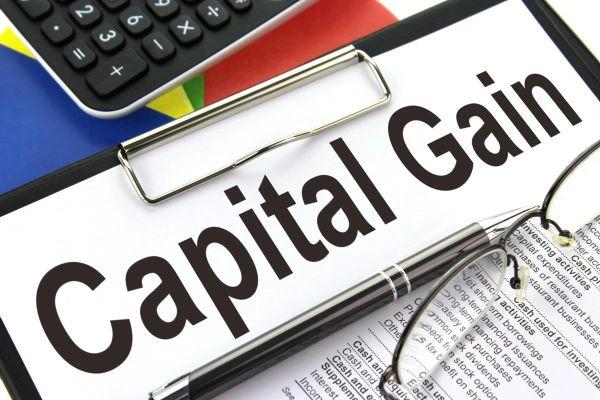Capital Asset includes movable and immovable, tangible and intangible, right, and securities (equity, bonds, etc.). Gains from such assets on its transfer are taxable under section 45 of the income tax act, provided that the assessee transfers capital assets in the previous year. Moreover, gains must arise during the transfer. Equity Shares are risky investment instruments in India. When the sale price is higher than the purchase price of the equity shares, bonds, real estate, jewellery, etc., profits arise, known as capital gains. The gains attract tax. Hence, it is necessary to know the short-term and long-term capital gains tax on shares.
There are two types of capital assets depending on their holding period- Short-term capital assets (less than or equal to 36 months) and long-term capital assets (more than 36 months). As per the general rule, the holding period is 36 months.
But in cases like listed equity and preference shares, listed securities (bonds, debentures, etc.), units of UTI, equity-oriented funds, and zero-coupon bonds, the holding period is 12 months. Therefore, if one holds these assets for less than or equal to 12 months, it is known as short-term capital assets, and long-term capital assets if held for more than 12 months. Similarly, in the case of land, building, and unlisted shares, the holding period is 24 months.
Types of Capital Assets
| Types of Capital Asset | Holding Period |
| Listed equity and preference shares, listed securities (bonds, debentures, etc.), units of UTI, units of equity-oriented funds, and zero-coupon bonds | 12 months |
| Immovable property (land and building) and unlisted shares | 24 months |
| Jewellery, precious stones, antiques, goodwill, intangible items, etc. | 36 months |
In this article, we will specifically learn about long-term capital gains tax on shares.

Grandfathering provision
In 2018, CBDT announced grandfathering of long-term capital gains tax on shares up to 31st January 2018. It means no tax on gains earned till 31st January 2018. If a taxpayer bought shares before or on 31/3/2018, he substitutes it with the fair market value (the highest price of the share), as the cost price, for calculating gains.
For instance, a share was bought on 1st August 2017 at ₹100. The FMV as of 31st January 2018 is ₹150. No tax is applicable on the gain of ₹50. However, any profit arising from the sale above ₹50 is taxable (after 31/1/2018), as per section 112A of the income tax act.
Calculation of long-term capital gains
In 2018, CBDT introduced grandfathering provision. So, for any shares purchased before 1st February 2018, the following formulas help to calculate the cost of acquisition:
- Value I- Fair Market Value as of 31st January 2018 or actual sales consideration, whichever is lower is Value I
- Value II- Value I or purchase price, whichever is higher, is the cost of acquisition.
One cannot avail of indexation benefits under section 112A. No indexation benefits for shares purchased after 1st February 2018.
Fair Market price is the highest quoted price of the share on the stock exchange.
Mr X has two shares of two companies in his portfolio- Co. A and B. He bought shares worth ten lakhs of A in May 2005. The FMV of these shares as of 31st January 2018 was 30 lakhs. He sold all the shares of A for 50 lakhs in June 2019.
He bought shares of B worth 20 lakhs in November 2016 and sold them for 40 lakhs in November 2019. The FMV of the shares as of 31st January 2018 is 25 lakhs. Find the long-term capital gains of the entire portfolio.
| Mr X’s portfolio | Sales consideration | Cost | FMV as on 31/1/18 | Value I | Value II (cost of acquisition) | Capital gains (Sale-cost of acquisition) |
| Co. A | 50,00,000 | 10,00,000 | 30,00,000 | 30,00,000 | COA= 30,00,000 | 20,00,000 |
| Co. B | 40,00,000 | 20,00,000 | 25,00,000 | 25,00,000 | COA= 25,00,000 | 15,00,000 |
| Total | 90,00,000 | 30,00,000 | 55,00,000 | 55,00,000 | COA= 55,00,000 | 35,00,000 |
Moreover, for any shares bought and sold after 31/1/2018, the capital gains= sales consideration – the cost of acquisition, with no indexation benefits.

Long-term capital gains tax on shares
Section 112 talks about tax on long-term capital gains on listed shares and equity-oriented funds purchased on or after 1/4/2018. The long-term capital gain tax on shares is 20% if STT (securities transfer tax) is not applicable. One levies securities transfer tax during the purchase or sale of securities.
Importantly, one cannot avail of indexation benefits under section 112A.
Further, section 112A is applicable when one fulfils the following conditions:
- Firstly, long-term capital gains on listed shares or equity-oriented funds or units of business trust.
- Secondly, if one pays STT at the time of transfer of shares.
- Thirdly, if one pays STT on the sale of shares.
Hence, if STT is applicable, the long-term capital gains tax on shares is 10% if the gains are more than one lakh. Therefore, one lakh is the threshold limit, and long-term capital gains up to one lakh are not taxable. Therefore, 10% tax + surcharge + 4% education and health cess is applicable.
For instance, the long-term capital gains for Mr Roy are two lakhs. He had paid STT. Hence, under section 112A he is liable to pay 10% tax on one lakh (2,00,000 – 1,00,000), which is ₹10,000. Hence, after one lakh exemption, the net amount is ₹1,00,000 on which 10% tax is applicable.

Examples of long-term capital gains tax on shares
For example, the total income of Mr X is five lakhs and the long-term capital gains amount to four lakhs. Firstly, we deduct long-term capital gains from total income as they are taxed separately. Hence, the balance income is one lakh. As per the income tax act, there is an exemption of up to ₹2,50,000 on the total income. Hence, after the exemption, there is a shortfall of ₹1,50,000. The shortfall reduces the long-term capital gains to ₹2,50,000. Lastly, on this amount 10% tax + surcharge + 4% cess is applicable.
| Total Income | 5,00,000 |
| (-) Long-term capital gains | -4,00,000 |
| Balance | 1,00,000 |
| Exemption | -2,50,000 |
| Net Taxable Income | -1,50,000 |
| Long-term capital gains | 4,00,000 |
| Shortfall | -1,50,000 |
| Net long-term capital gains | 2,50,000 |
| 10% tax (10%*2,50,000) | 25,000 |
| (+) Cess (4%*25,000) | 1000 |
| Long-term capital gains tax on shares | 26,000 |




